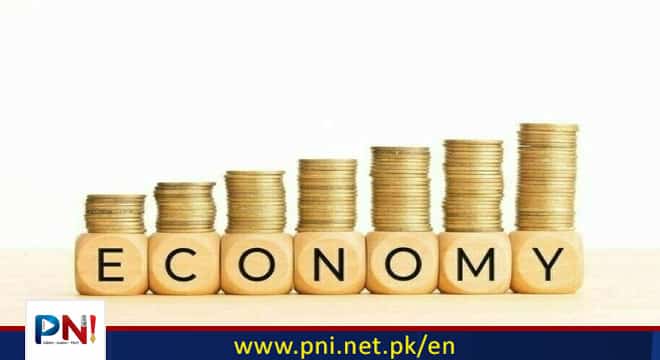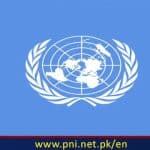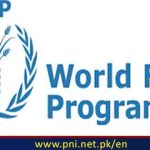NEW YORK, May 17 (APP):Pakistan, which faces significant economic challenges, is expected to have “modest economic growth”, with its Gross Domestic Product (GDP) projected to expand by 2 per cent in 2024, according to a major United Nations report.
Noting that Pakistan had entered into a Stand-by Arrangement with the International Monetary Fund (IMF) worth $3 billion, the mid-year World Economic Situation and Prospects report said that the programme was expected to help stabilize the economy, increase the country’s foreign exchange reserves, and facilitate fiscal adjustment while also protecting crucial social spending.
At the same time, it said that in South Asia tight financial conditions and fiscal and external imbalances will continue to weigh on growth in the near term.
“In addition, geopolitical tensions – including the ongoing war in Ukraine and the conflict in Western Asia – will expose net-oil-importing countries in the region, including India, to the risk of sudden oil price spikes.”
Most countries in South Asia, according to the report, experienced currency depreciation pressures during the second half of 2023. Between July and October, the United States dollar climbed by around 6.5 per cent against a basket of global currencies, reaching its highest level in 11 months, mainly supported by the strong performance of the American economy and high interest rates.
“Thus,” it said, “between July and October, the Sri Lanka rupee depreciated by 3.2 per cent against the U.S. dollar, while the Indian rupee depreciated by 1.2 per cent. After raising policy rates in 2022, most central banks in South Asia paused monetary tightening or started lowering their key policy rates in 2023, with a few exceptions.
In this regard, the report noted that the State Bank of Pakistan has kept its policy rate unchanged at a record high of 22 per cent since June 2023.
In 2023, it said, the number of people facing acute food insecurity increased in Bangladesh and Pakistan and decreased in Sri Lanka. Afghanistan continued to be the country most affected by the food crisis in the region, with around 46 per cent of the population facing acute levels of food insecurity.
Ever-worsening climate shocks are also a challenge, threatening decades of development gains, especially for the world’s Least Developed Countries (LDCs) and small island developing States (SIDS), the report said.
“Droughts intensified considerably during July and August (2023), affecting most of India, Nepal, and Bangladesh, while Pakistan recorded above-average rainfall,” it said.
As far as the global economy is concerned, it is now forecast to grow by 2.7 per cent in 2024 (an increase of 0.3 percentage points from the forecast in January) and 2.8 per cent in 2025 (an increase of 0.1 percentage points).
These changes are mainly due to better-than-expected performance in some large developed and emerging countries, notably Brazil, India, Russia and the United States, the report said.
Inflation is also down from the 2023 peak, said Shantanu Mukherjee of the UN Department of Economic and Social Affairs (DESA), presenting the report to reporters in New York.
“In developed countries, tight labour markets are seeing wage increases for some parts of the population and also drawing people into the labour force, which is important,” he added.
However, the outlook is only cautiously optimistic in the face of higher-for-longer interest rates, debt sustainability risks and continuing geopolitical tensions.
Even though prospects for SIDS are being revised upwards to about 3.3 per cent each year, Mukherjee said this is still below the pre-pandemic average, meaning that “lost ground is still not being made up.”
In the case of Africa and LDCs in general, prospects are revised downward to about 3.3 per cent growth in 2024.
“This is particularly worrying because Africa is home to about 430 million living in extreme poverty and close to 40 per cent share of the global undernourished population,” Mukherjee explained. Furthermore, two-thirds of the high-inflation countries listed in the report are on the continent.
“In 2024, over a quarter of public revenues on average in this continent went towards interest payments. That’s again about 10 percentage points more than the average over the years immediately preceding the pandemic.”
For developing countries, on average, the debt situation is not as dire, but he was concerned that investment growth continues to fall, it said.
These “downsides” are further compounded by risks such as inflation, which is both a symptom of the underlying fragility and a concern on its own.
The report also contains a special section on critical minerals such as lithium, nickel, cobalt, and copper, that are essential for the transition to clean energy.
Countries that possess these resources will, however, need smart policies, as well as effective implementation capacities to reap the benefits.
Mineral-sector-driven growth has in the past often been associated with environmental damage, stunted development of other sectors, poverty, conflict, and other adverse outcomes collectively known as the “resource curse”.
“It is imperative for developing countries to design and implement well-targeted and timely economic, social, and environmental policies to optimize the benefits of their critical minerals endowments and avoid another cycle of resource curse,” the report said.
Follow the PNI Facebook page for the latest news and updates.








